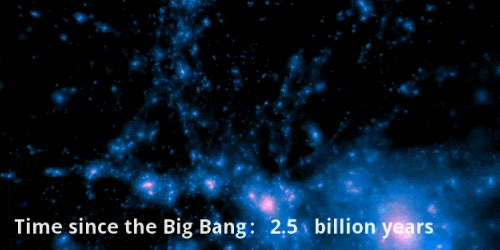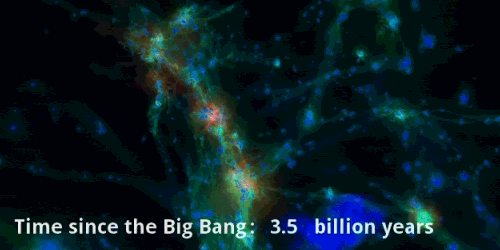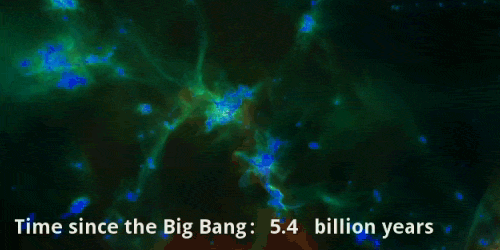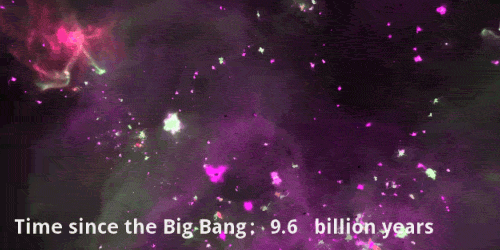skunkbear:Scientists at MIT have developed a new simulation that traces 13 billion years of cosmic e
skunkbear:Scientists at MIT have developed a new simulation that traces 13 billion years of cosmic evolution. They start the simulation shortly after the big bang with a region of space much smaller than the universe (a mere 350 million light years across). Still, it’s big enough to follow the forces that helped create the galaxies we see today, and correctly predict the gas and metal content of those galaxies.At first, we see dark matter clustering due to the force of gravity (first two GIFs). Then we see visible matter — blue for cool clouds of gas where galaxies form, red for more violent explosive galaxies (second two GIFs).Super massive blackholes form, superheating the material around them, causing bright white explosions that enrich the space between galaxies with warm but sparse gas (fifth GIF).Different elements (represented by different colors in the sixth GIF) are spread through the universe.We arrive at a distribution of dark matter that looks similar to the one we see in our universe today (seventh GIF).The simulation is so complex it would take two thousand years to render on a single desktop. And it’s kinda beautiful.Image Credit: MIT and Nature Video -- source link
Tumblr Blog : skunkbear.tumblr.com








